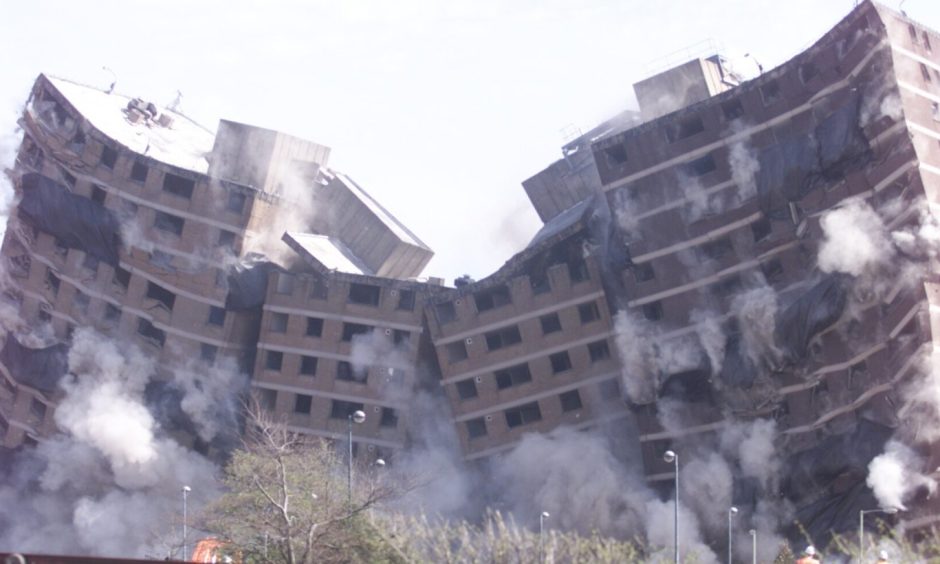
These photographs take us back to the moment the last of the Whitfield multis was reduced to a mountain of rubble 20 years ago.
Hundreds of neighbours and former residents flocked to watch Greenfield and Kellyfield Courts being flattened by 70 kilograms of explosives.
A mighty blast was followed by the deafening rumble of falling steel and concrete.
The skyline changed forever in just five seconds.
Do you remember them?
There were actually two blocks, making four courts.
These were the 16-storey Quarryfield and Whitfield Courts and the neighbouring tower block which housed Greenfield and Kellyfield Courts.
They gave people a bird’s eye view of the world below.
The multi-storey blocks comprising 360 flats were built in 1969 on the Whitfield scheme, which included the ultimately disastrous and now infamous Skarne blocks.
A population the size of Forfar was decanted to Whitfield and left to get on with it.
What started as the grand solution to the housing problem by town planners soon turned into a living nightmare for the residents that had to live in them.
Whitfield became the least desirable, and most crime-ridden, part of the city.
The council poured millions of pounds into the area and began a transformation in the 1990s which went some way to improving the scheme’s reputation.
People wanted front and back doors.
Skarne blocks and skyscrapers demolished
Many of the Skarne blocks and the tower blocks were set aside for demolition at the turn of the century.
This was due to lack of demand and falling occupancy rates.
“They are supposed to be family houses but they are accessed from landings up two flights of stairs with perhaps another flight still to climb,” said Councillor Willie Sawyers.
“A woman with a couple of bairns and her shopping does not want that.
“With hindsight, they shouldn’t have bothered refurbishing them.
“There has always been a major design problem and there is nothing you can do about that.
“It is just an unpopular house type like the multis which are left in Whitfield.
“A few of them are sitting at 30% occupancy and time has moved on.
“People want semis and cottage-type houses with gardens for their kids.”
The remaining 145 tenants in the two 16-storey blocks were consulted and the 64 residents who responded were in support of the proposal.
Quite a few of the original tenants were still there.
Home loss payments would come to £217,500.
The demolition contract for the 360 flats was awarded to Safedem Ltd, whose offer of £853,000 was the lowest of the tenders received.
The total cost of the project was more than £1.1 million.
People hung out of windows to watch Dundee’s Whitfield multis fall
Quarryfield and Whitfield Courts were the first to be demolished on May 25 2003.
The neighbouring Greenfield and Kellyfield Courts followed on April 25 2004, after Safedem spent several months removing internal fittings.
More than 1,400 detonators and delays were placed within the structure to control the direction of the collapse.
A council spokesman said members of the public should avoid the area because of the amount of dust expected to be generated when the block collapsed.
Nearby residents were advised to keep windows, doors and vents closed, to avoid hanging out washing and to cover any garden ponds.
Crowds gathered to bid farewell to Whitfield’s last multi.
They stood against the railings on Longhaugh Road while others hung out of windows and crammed on to balconies to watch the demolition.
At 11.30am the detonators were triggered.
People who used to live there watched their time come to an end.
Demolition created massive cloud of dust
The Courier reported: “Hundreds of people watched as the 18,000-tonne structure was wiped from the skyline and reduced to rubble in just five seconds.
“The 16-storey block, built in 1969, was earmarked for demolition by Dundee City Council after it became clear there was a lack of demand for its 180 flats.
“The building surrendered to the explosives and landed, as planned, on its own foundations – with houses just yards away.
“A huge cloud of smoke poured out of the rubble and into the new housing scheme in nearby Salton Crescent.
“About 150 police officers, council officials and Safedem, the demolition contractors, were on duty during the operation.
“A quarter-mile exclusion zone was set up around the site and people had been warned to steer clear of the area for their own safety.
“Seventy households within the zone were evacuated.”
There was ‘not a single brick out of place’
William Sinclair, managing director of Safedem, said the demolition was textbook.
“Everything went perfectly and was better than any we have done in Dundee,” he said.
“We used delay mechanism to a greater extent, which helped with the folding in of the gables.
“We heard from the weather report that there was to be a southerly wind, so we knew the wind would blow the dust to the north.
“In the end, there was not a brick out of place so we are very pleased.”
It took six months to clear the site of debris.
Thanks to people power, planning and a whole lot of determination, Whitfield is revived and regenerated, and negative perceptions have become a thing of the past.
The Whitfield demolition was the eighth blowdown of multis since the mid-1990s and just over half of Dundee’s original complement of 49 were left.
Multi demolitions included Harefield and Kilspindie Courts in Foggyley Gardens.
The Trottick multis of Trottick Court, Mains Court and Claverhouse Court also fell, and several of the Ardler multis, which brought the loss of 1,531 flats.
The 25-storey Derby Street multis – Butterburn and Bucklemaker Courts – were the last of the big ones to come down, in 2013.
Safedem also ingenuously dismantled Tayside House with robotic, high-reach “munchers” without disturbing the east coast railway tunnel a metre away.
Despite a perceived move towards lower-level housing, the city’s vertical villages still account for 1,004 of Dundee’s 12,500 or so local authority homes.
The only way to access the Whitfield multis now, though, is through memory.
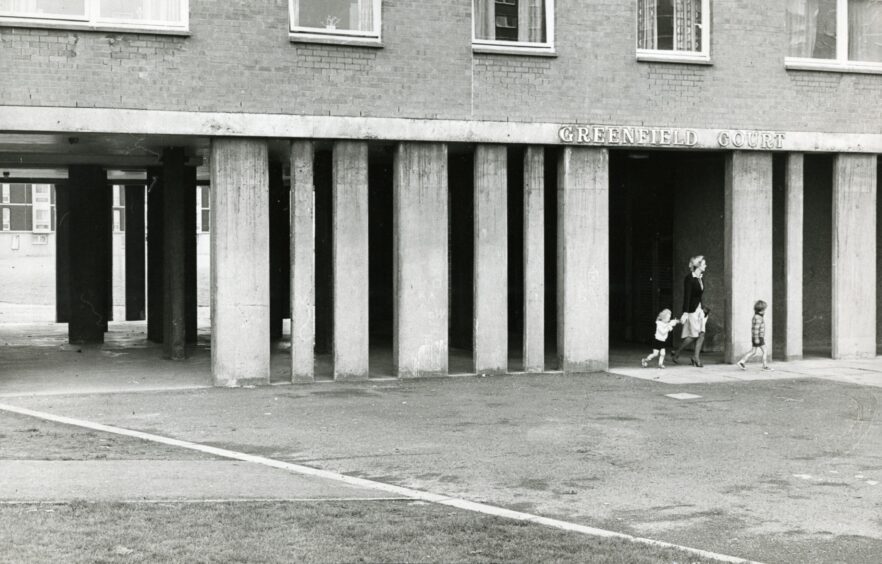
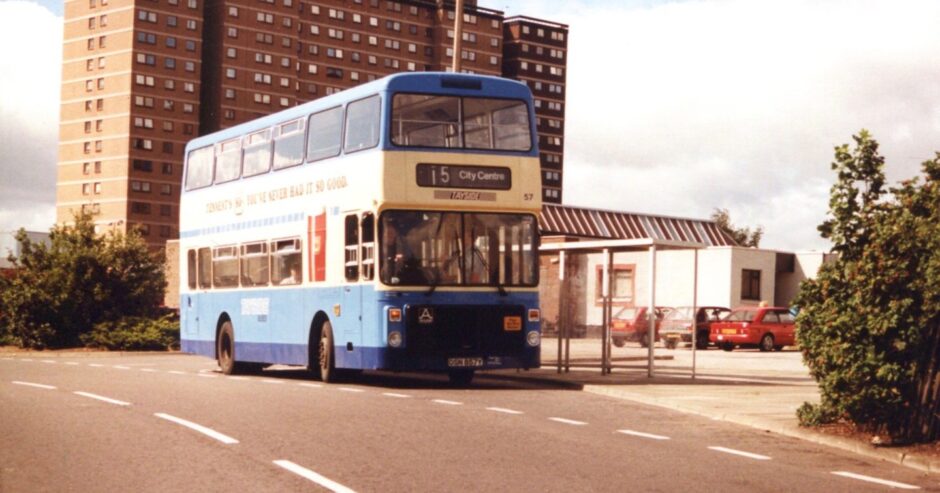
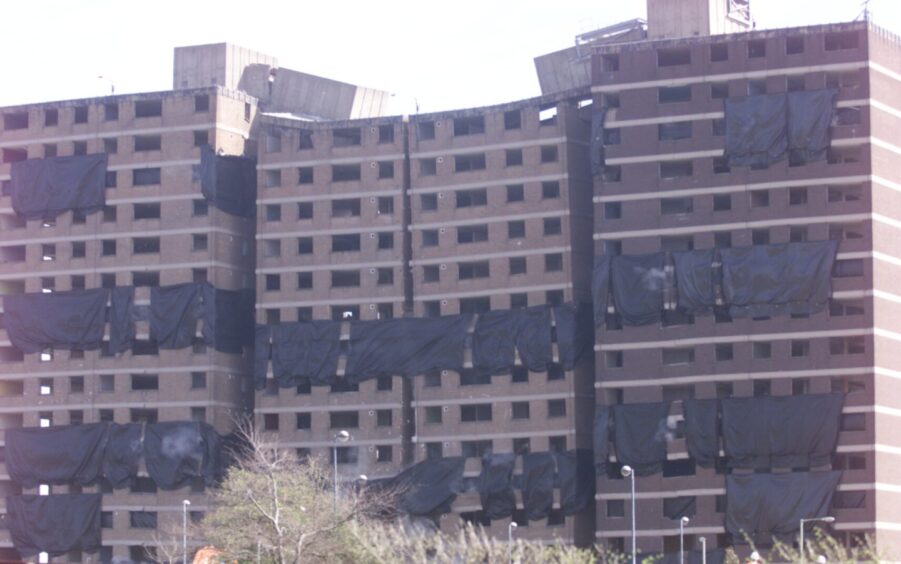
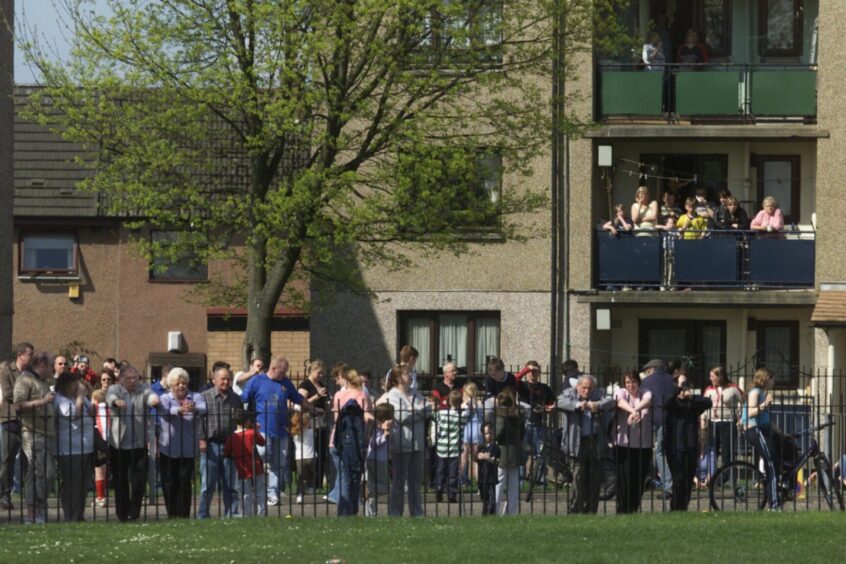
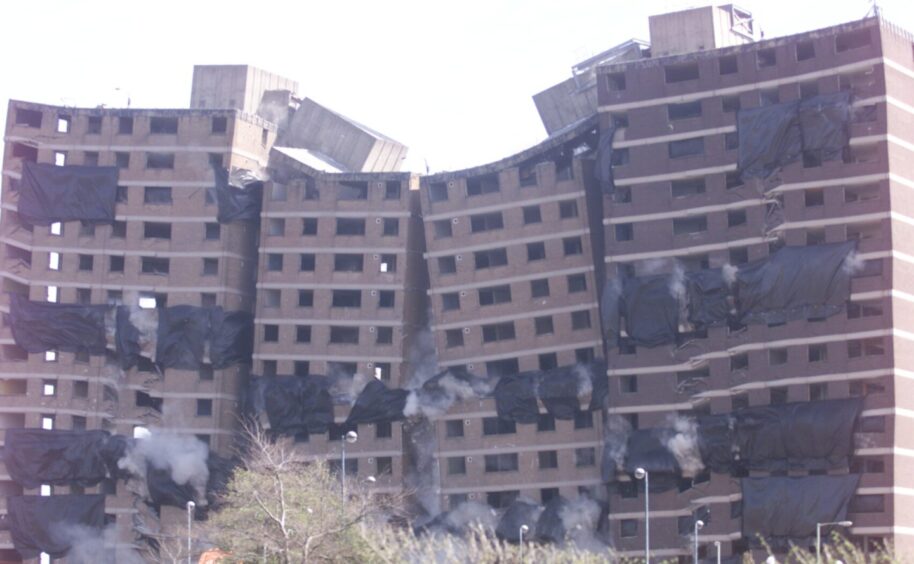
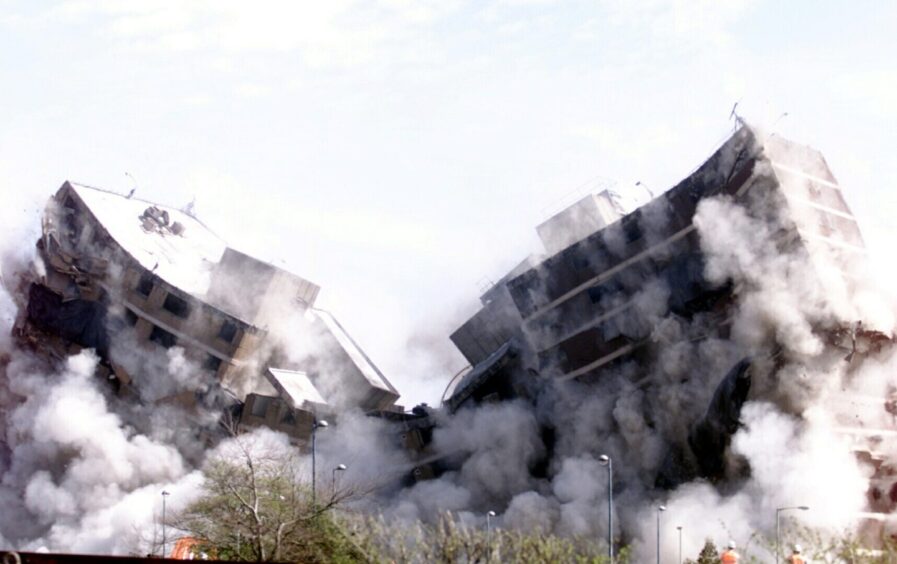
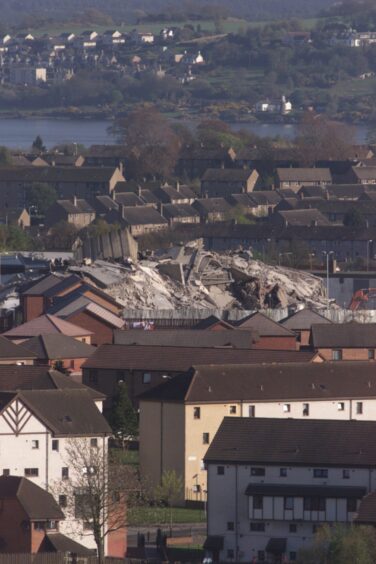
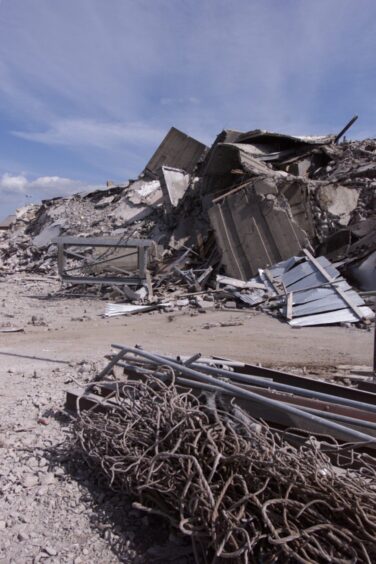
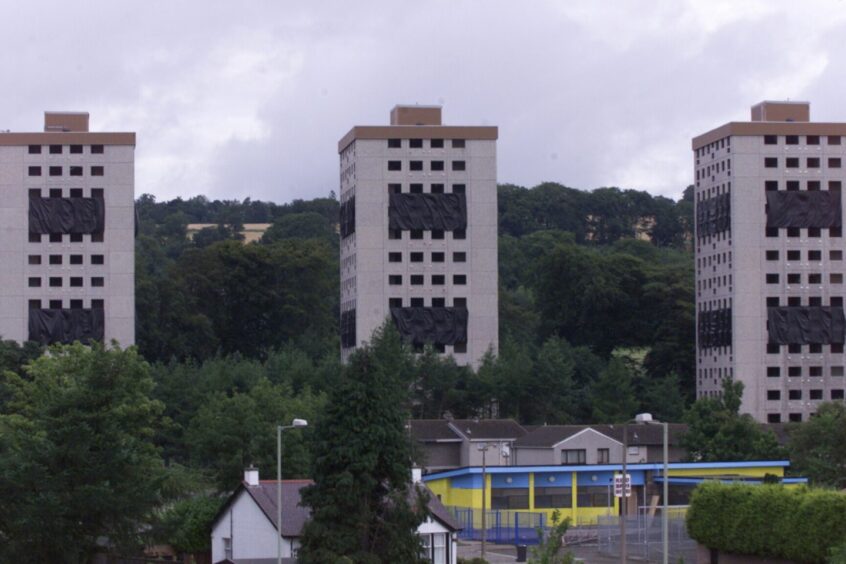










Conversation